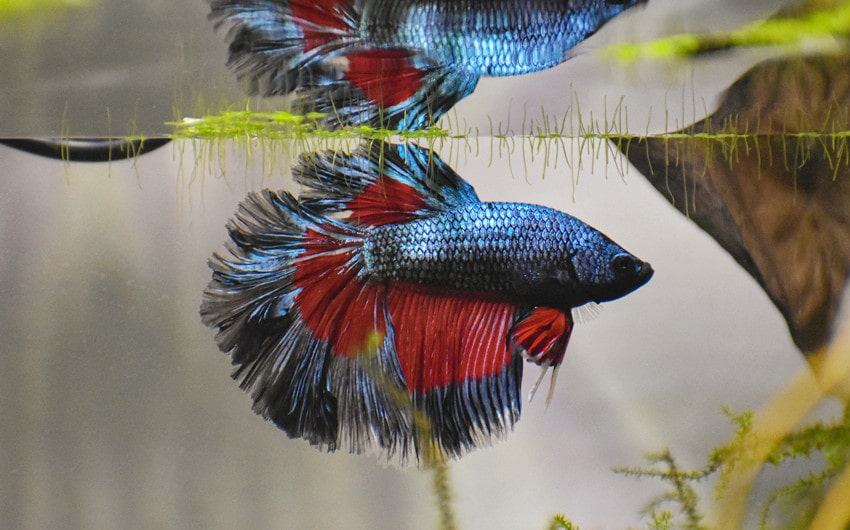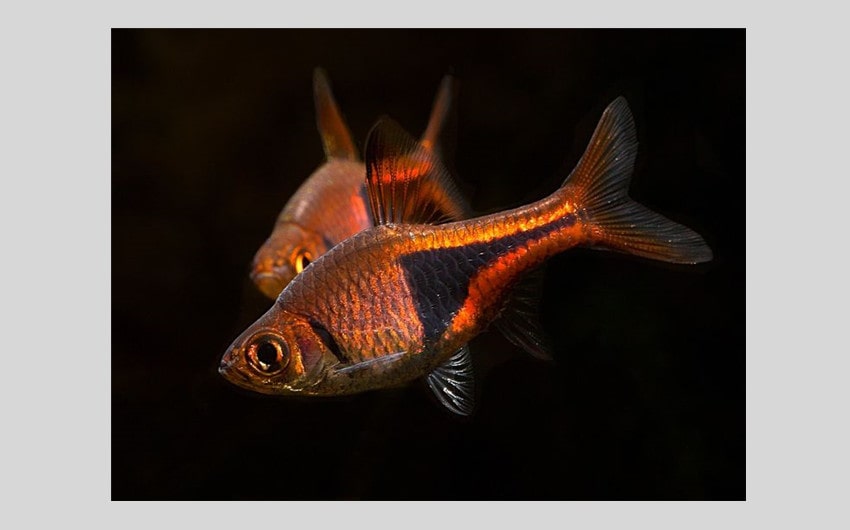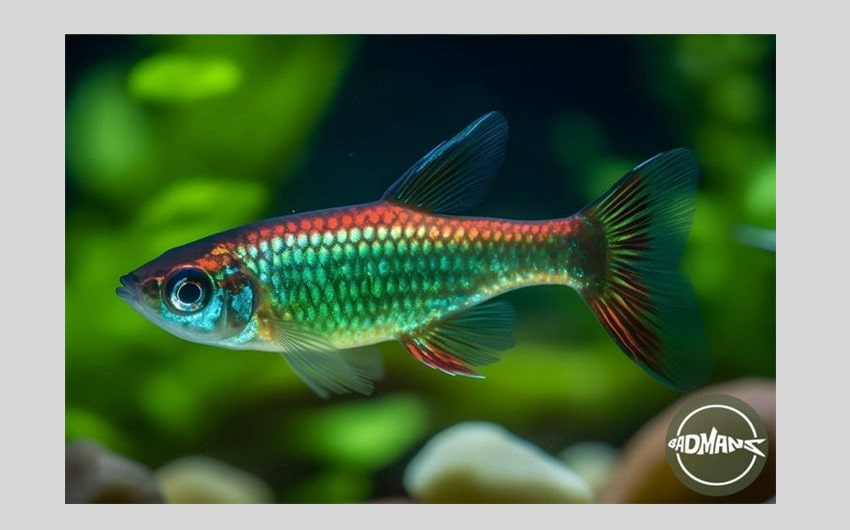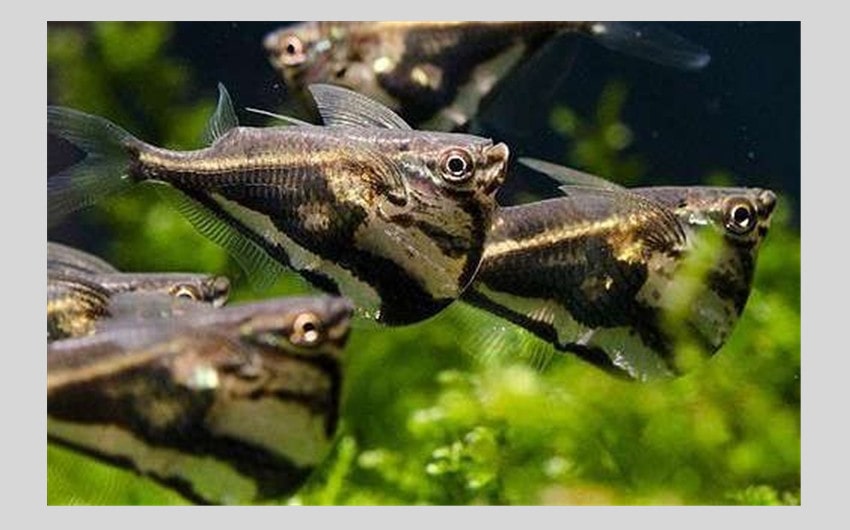What Fish Can Live with Bettas? A Guide to Friendly Companions
Keeping bettas in an aquarium is exciting, but their feisty nature can make you wonder: what fish can live with bettas? The good news is that bettas can peacefully share their tank with certain fish if chosen wisely. Friendly species like corydoras catfish, neon tetras, and kuhli loaches are excellent options because they’re calm and won’t trigger aggression.
Whether you’re a first-time betta owner or looking to create a lively community tank, this guide will help you choose the perfect companions for your colorful, charismatic betta. Let’s dive into the details!
Understanding Betta Fish Temperament

Betta fish, often admired for their vibrant colors and flowing fins, have a reputation for being territorial and aggressive, especially among males. However, their temperament is more nuanced than many people realize. Understanding their behavior is key to choosing compatible tank mates and maintaining a peaceful aquarium environment.
Aggression Levels and Triggers
Bettas are naturally defensive of their territory. In the wild, they often live in small, confined areas like rice paddies or shallow streams, where competition for resources is high. This territorial instinct carries over into aquariums, making them prone to flaring and attacking perceived threats, especially other fish with flashy colors or long fins.
Key triggers for aggression include:
- Bright, flashy fish: These can be mistaken for rivals.
- Overcrowding: Too many fish in a small space increases stress.
- Similar-looking fish: Species that resemble bettas, such as gouramis, may provoke hostility.
Male vs. Female Bettas
Male bettas are generally more aggressive than females and are less tolerant of other fish in their space. Female bettas, on the other hand, are typically calmer and can coexist more easily with other species, especially in groups (known as sororities). That said, both sexes can display individual personality differences, ranging from docile to highly aggressive.
Environmental Factors Influencing Behavior
The tank environment plays a significant role in shaping a betta’s temperament. Factors that can reduce aggression include:
- Adequate tank size: Bettas need space to establish their territory. A larger tank (10 gallons or more) is ideal for housing tank mates.
- Plenty of hiding spots: Plants, caves, and other decorations provide refuge for tank mates and help reduce confrontations.
- Stable water conditions: Poor water quality or fluctuating temperatures can increase stress and aggression.
Fish Species Compatible with Bettas
Choosing the right tank mates for your betta is crucial to maintaining a peaceful and harmonious aquarium. While bettas have a reputation for being territorial, they can coexist with other species under the right conditions. Here are some of the best fish and aquatic companions to consider when pairing with bettas, along with reasons why they make great choices.
1. Corydoras Catfish

Corydoras catfish are a favorite among aquarists looking for peaceful tank mates for bettas. These small, bottom-dwelling fish are non-aggressive and spend most of their time scavenging for leftover food at the bottom of the tank.
Since they occupy a different swimming level from bettas, they minimize territorial disputes. Additionally, their shy, calm nature keeps them from provoking the betta, making them an ideal choice for community tanks.
2. Neon Tetras and Ember Tetras

Image source: Pinterest
Tetras are small, colorful schooling fish that add vibrancy and activity to an aquarium. Neon tetras and ember tetras, in particular, are compatible with bettas due to their peaceful demeanor and preference for swimming in groups.
Their small size and schooling behavior reduce the likelihood of attracting a betta’s attention, provided the tank is large enough to accommodate their active swimming needs.
3. Kuhli Loaches

Image source: Pinterest
Kuhli loaches are fascinating bottom-dwelling fish that resemble small eels. Their nocturnal habits and preference for burrowing in substrate or hiding in decorations make them excellent tank mates for bettas. Kuhli loaches are peaceful and rarely come into conflict with bettas since they occupy the bottom of the tank and are active mostly at night.
4. Harlequin Rasboras

Image source: Pinterest
Harlequin rasboras are small, peaceful schooling fish that share similar water parameter requirements with bettas. Their subtle beauty and calm nature make them a popular choice for community tanks. When kept in groups of six or more, they tend to focus on their schoolmates rather than the betta, which helps maintain a peaceful environment.
5. Snails

Snails are an excellent choice for a betta tank because they are peaceful and bring functional benefits, like cleaning algae and uneaten food. Popular options include nerite snails, mystery snails, and even ramshorn snails.
These creatures are slow-moving and non-threatening, making them ideal companions for bettas. Additionally, their hard shells protect them from occasional betta curiosity.
6. Shrimp

Shrimp, such as ghost shrimp, Amano shrimp, and cherry shrimp, are another fantastic addition to a betta tank. They’re active, interesting to watch, and serve as natural tank cleaners by consuming algae and leftover food.
However, some bettas may view smaller shrimp as prey, so it’s important to choose larger species or monitor interactions carefully. If your betta is particularly aggressive, shrimp may need more hiding spaces like plants or caves.
7. Otocinclus Catfish (Otos)

Image source: Pinterest
Otocinclus catfish are small, peaceful algae eaters that are perfect for community tanks. They stay busy cleaning algae from tank walls, plants, and decorations, which helps keep the tank clean without disrupting the betta. Otos are schooling fish and thrive in groups of three or more. They are shy and tend to stick to their bottom-dwelling habits, keeping out of the betta’s way.
8. White Cloud Mountain Minnows

Image source: Pinterest
White Cloud Mountain Minnows are hardy, schooling fish that adapt well to a variety of tank conditions, including those shared with bettas. These active yet peaceful fish are perfect for adding movement and variety to the tank.
While they are naturally cooler-water fish, they can adapt to slightly warmer temperatures that bettas prefer. Their small size and subtle colors ensure they don’t provoke a betta’s territorial instincts.
9. Endler’s Livebearers

Image source: Pinterest
Endler’s Livebearers are colorful, lively fish that are smaller and less flashy than guppies, making them less likely to draw aggression from a betta. These fish are active and social, bringing life and movement to the tank.
Endler’s Livebearers are hardy and easy to care for, and they thrive in groups. If keeping males and females together, be prepared for them to breed, as they are prolific livebearers.
10. Hatchetfish

Image source: Pinterest
Hatchetfish are unique-looking fish that inhabit the upper levels of the tank. They are surface-dwelling species that rarely interact with mid- or bottom-level swimmers like bettas. Their calm and peaceful nature makes them a great choice for a betta tank.
However, hatchetfish are jumpers, so a tank with a tight-fitting lid is essential to keep them safe. They prefer calm environments with floating plants that provide shelter and reduce stress.
11. Clown Pleco

Image source: Pinterest
Clown plecos are small algae-eating fish that spend most of their time at the bottom of the tank. Unlike larger plecostomus species, clown plecos remain small, usually growing to just 3-4 inches. They are shy and non-aggressive, often hiding in caves, driftwood, or plants during the day.
Clown plecos also require driftwood in their diet to thrive, so adding pieces of driftwood to the tank is essential. Their nocturnal behavior and bottom-dwelling habits ensure minimal interaction with bettas.
Fish to Avoid with Bettas
While bettas can coexist with certain peaceful species, there are some fish that are incompatible due to their behavior, size, or physical characteristics. Choosing the wrong tank mates can lead to stress, injury, or even death for either the betta or the other fish. Below are fish to avoid when setting up a community tank with a betta, along with explanations for why they are unsuitable.
1. Aggressive or Fin-Nipping Fish
Certain species of fish are naturally aggressive or have a tendency to nip at the fins of other fish. Bettas, with their long, flowing fins, are especially vulnerable to fin-nippers. These attacks can cause stress, injury, and infection in bettas.
Examples to Avoid:
- Tiger Barbs: Known for their fin-nipping behavior, they often harass slow-moving fish with long fins.
- Serpae Tetras: Another fin-nipping species that thrives in active tanks but can be aggressive toward bettas.
- Red-Tailed Sharks: Territorial and aggressive, especially in confined spaces.
2. Other Labyrinth Fish (e.g., Gouramis)
Gouramis are closely related to bettas and share similar behaviors, including territorial aggression. Housing bettas with gouramis often leads to competition for space and dominance, especially in smaller tanks. This can result in fights, stress, or injuries.
Examples to Avoid:
- Dwarf Gouramis
- Pearl Gouramis
- Kissing Gouramis
3. Fish with Long, Flowing Fins
Fish with long, elaborate fins may be mistaken for a rival male betta. This can trigger the betta’s territorial instincts, leading to aggressive flaring, chasing, or attacking. Additionally, fish with flowing fins are more prone to stress and injury if a betta becomes hostile.
Examples to Avoid:
- Male Guppies: Their vibrant colors and long tails can provoke aggression in bettas.
- Fancy Goldfish: Apart from their long fins, goldfish also require different water parameters, making them incompatible for other reasons.
- Angelfish: Their large, flowing fins and semi-aggressive nature often lead to conflict with bettas.
4. Overly Active or Fast-Swimming Fish
Fast-moving fish can stress a betta, which is naturally slower and more deliberate in its movements. Overly active fish may dart around the tank, disrupting the betta’s territory and causing constant agitation.
Examples to Avoid:
- Danios (e.g., Zebra Danios): Their rapid swimming and schooling behavior can overwhelm a betta.
- Rainbowfish: Their energy and large size make them unsuitable companions.
- Pencilfish: While peaceful, their constant movement may stress a betta.
5. Large, Predatory, or Aggressive Fish
Large or predatory fish may view a betta as prey or competition. Even if they do not attack outright, their size and activity can intimidate a betta, leading to stress and reduced quality of life.
Examples to Avoid:
- Cichlids (e.g., Oscars, Convict Cichlids): Highly aggressive and territorial, they are entirely unsuitable for a betta tank.
- Arowanas: Large, predatory fish that could easily harm or eat a betta.
- Bala Sharks: Too large and active to coexist peacefully with bettas.
6. Species That Require Different Water Parameters
Some fish simply cannot thrive in the same water conditions as bettas. Bettas prefer warm water (75–80°F) with slightly acidic to neutral pH (6.5–7.5). Fish that require cooler or vastly different water conditions should not be housed with bettas.
Examples to Avoid:
- Goldfish: Require cooler water temperatures (65–72°F) and produce a lot of waste, making them incompatible with bettas.
- White Cloud Minnows (in unheated tanks): While they can adapt to betta tanks, they thrive better in cooler water.
- Discus: Require very soft, warm water with exacting maintenance that may differ from a betta’s needs.
7. Territorial or Bullying Fish
Certain species, even if not outright aggressive, can bully bettas by chasing or harassing them. This causes undue stress and may lead to injuries or health problems.
Examples to Avoid:
- Clown Loaches: Their playful yet boisterous behavior can overwhelm a betta.
- Giant Danios: Larger and more energetic, they can intimidate or bully bettas.
- Silver Dollars: Large schooling fish that can unintentionally dominate a tank.
8. Tiny Fish or Invertebrates That May Become Prey
Bettas are carnivores by nature and may view very small fish or invertebrates as food. While some shrimp and small fish can coexist with bettas, they require careful observation to ensure the betta doesn’t prey on them.
Examples to Avoid:
- Nano Fish (e.g., Chili Rasboras): Their tiny size makes them potential targets.
- Small Shrimp (e.g., Cherry Shrimp): Bettas may hunt them if they are too small or lack hiding spots.
- Juvenile Fish: Bettas might mistake baby fish for a snack.
Tips for Introducing Tank Mates

Introducing new tank mates to a betta’s tank requires careful planning and monitoring to ensure harmony in the aquarium. Bettas are territorial by nature, and a sudden addition can cause stress or aggression. Follow these tips to create a peaceful and stress-free environment for your betta and its new companions.
1. Choose the Right Tank Setup
The tank’s size, layout, and overall environment play a major role in successful cohabitation. Ensure the tank is spacious enough to accommodate the betta and its new mates. A minimum of 10 gallons is recommended for a betta community tank, with larger tanks offering even better chances of success.
Key Considerations:
- Hiding Spaces: Include plants, caves, driftwood, or decorations that provide plenty of hiding spots for both the betta and the new fish.
- Tank Zones: Select tank mates that occupy different zones (e.g., bottom-dwellers like corydoras or surface swimmers like hatchetfish) to reduce competition.
- Natural Dividers: Use live or artificial plants to break up the line of sight, which helps reduce territorial behavior.
2. Quarantine New Fish
Before introducing any new fish, quarantine them in a separate tank for at least 1-2 weeks. This prevents the spread of diseases, parasites, or infections to your betta. The quarantine period also gives you time to observe the new fish’s behavior and health.
Steps for Quarantine:
- Use a small, filtered tank for the quarantine process.
- Monitor the new fish for signs of illness, such as white spots (ich), clamped fins, or unusual behavior.
- Treat any visible issues before adding the new fish to the main tank.
3. Introduce the Betta Last
If possible, set up the tank and add all the new tank mates before introducing the betta. This way, the betta perceives the tank as a shared space rather than its established territory, reducing territorial aggression. If the betta is already in the tank, proceed cautiously with the next steps.
4. Use a Tank Divider
If you’re unsure how the betta will react to new tank mates, start with a temporary tank divider. This allows the betta to see the new fish without direct interaction. Observe the betta’s behavior over a few days before removing the divider.
Signs of Acceptance:
- The betta ignores or shows mild curiosity toward the new fish.
- Minimal flaring or aggressive posturing.
Signs of Aggression:
- Persistent flaring, chasing, or attacking the divider.
- Stressful behavior such as frantic swimming or hiding.
5. Introduce New Fish Gradually
When ready to add the new tank mates, do so gradually. Place the new fish in the tank while closely monitoring the betta’s reaction. A slow introduction helps both the betta and the newcomers adjust to each other.
Steps for Gradual Introduction:
- Float the bag or acclimation container with the new fish in the tank for 15-20 minutes to equalize the temperature.
- Slowly add small amounts of tank water to the bag or container over 20-30 minutes to acclimate the new fish to the water parameters.
- Gently release the new fish into the tank, ensuring they have access to hiding spots.
6. Monitor Behavior Closely
After introducing new tank mates, keep a close eye on interactions over the next several days. Bettas may take some time to adjust to the presence of new fish, and their initial reaction can vary.
What to Watch For:
- Positive Behavior: The betta ignores or peacefully coexists with the new tank mates.
- Neutral Behavior: Some flaring or curiosity but no physical aggression.
- Negative Behavior: Chasing, nipping, or sustained aggression toward the new fish.
7. Feed Strategically
One of the most common points of conflict in a community tank is competition for food. Bettas can be territorial about feeding time, which may lead to chasing or bullying other fish.
Tips for Peaceful Feeding:
- Feed bettas first to satisfy their hunger and reduce food-related aggression.
- Use sinking pellets or wafers for bottom-dwelling tank mates like corydoras or loaches.
- Feed small portions at a time and spread the food across the tank to prevent competition.
8. Provide a Stress-Free Environment
Stress is a common cause of aggression in bettas and can also affect the health of other fish. Maintaining optimal water conditions and providing a calm environment reduces the chances of conflict.
Environmental Tips:
- Keep water parameters stable (temperature: 75-80°F, pH: 6.5-7.5, ammonia/nitrite: 0 ppm).
- Perform regular water changes to maintain cleanliness.
- Use dim lighting or floating plants to create a calm, natural environment.
9. Have a Backup Plan
Not all bettas are suited for community tanks. Some individuals are naturally more aggressive or territorial than others. Be prepared to separate the betta or the tank mates if coexistence proves too difficult.
Backup Options:
- Set up a separate tank for the betta if aggression is persistent.
- Relocate the tank mates to another community tank if they are being targeted.


